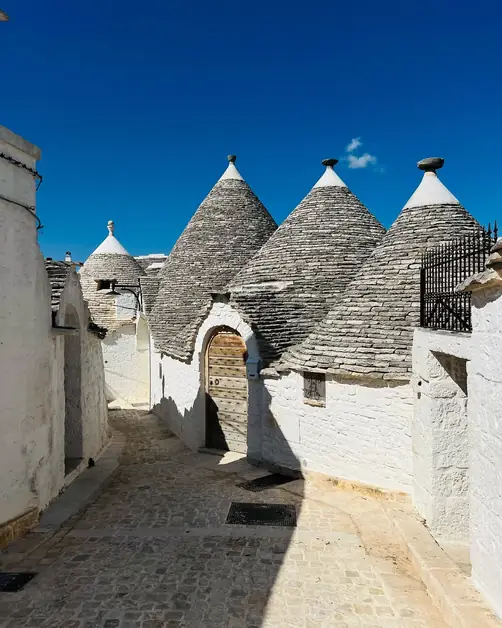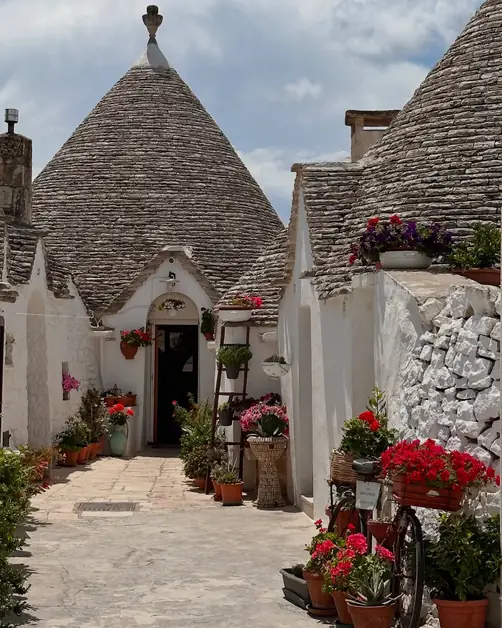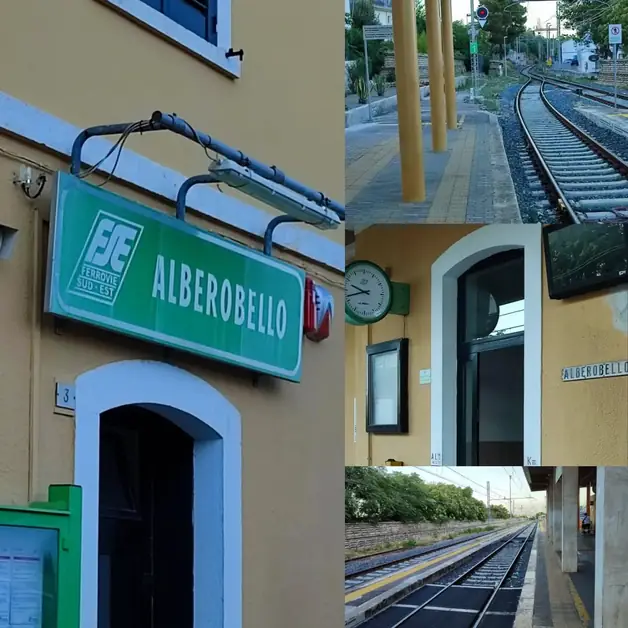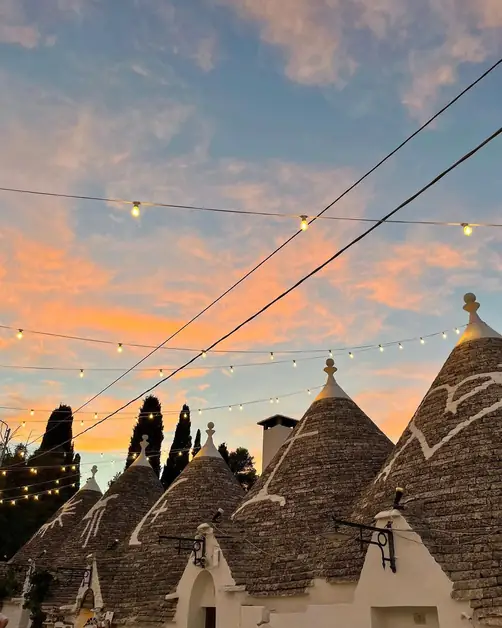Apotropaic Masks of Alberobello
The apotropaic masks of Alberobello are ancient symbols that protect homes from negative influences.

Alberobello, a municipality in the metropolitan city of Bari in Puglia, is known worldwide for its trulli, the typical dry stone houses with conical roofs. This town not only preserves a unique architecture but also ancient and mysterious symbols. Among these, the apotropaic masks stand out, carved or painted on the trulli, loaded with deep meanings.
The term "apotropaic" comes from the Greek apotrépein, meaning "to ward off." Apotropaic masks were symbolic elements used since ancient times to drive away evil, protect homes and their inhabitants from malevolent spirits, misfortune, and envy. Unlike carnival masks, apotropaic masks do not serve to entertain or conceal identity but have an exclusively protective and magical function.
To a distracted eye, they may go unnoticed, but if you observe the trulli carefully, especially in the Rione Monti and Aia Piccola areas, you can spot faces carved or drawn in specific places: on chimneys, doors, or even among the stones of the roofs. Some are stylized, while others show human or animal faces with marked, sometimes distorted features. These are signs that tell of a millennia-old tradition that unites architecture with popular magic.
The purpose of apotropaic masks was to protect the home from the evil eye and negative influences. To ward off envy or bad thoughts from neighbors or visitors. To invoke luck and well-being for the family. Many masks display threatening expressions to scare away evil spirits. Some seem to smile, but these are often ambiguous smiles, deliberately unsettling, aimed at deterring any negative energy.
Alberobello, like the rest of the Puglia region, has a long agricultural history, filled with oral traditions, rituals, and beliefs. Apotropaic masks are part of this world. In times when there were no insurance or efficient healthcare systems, protecting the home and family with symbolic rituals was a form of "spiritual insurance." Even today, many residents of Alberobello preserve these traditions, perhaps without fully believing in them, but recognizing their historical and identity value.
In addition to the masks, many trulli display white symbols painted on the roofs: crosses, hearts, eyes, stars. These also have an apotropaic or religious function and are sometimes linked to forms of syncretism between Catholicism and pagan beliefs. Visitors to Alberobello can add a deeper experience to their classic stroll among the trulli: searching for the masks. It is a way to see the town with different eyes, capturing details that tell of the fear, faith, and imagination of its inhabitants.
These masks are not highlighted in the main tourist circuits but represent an invisible heritage that deserves attention. To notice the apotropaic masks, one needs to observe calmly, perhaps taking photos of the architectural details. Some local guides organize thematic tours to discover the symbols of the trulli, including those related to magical protection. The apotropaic masks of Alberobello are a hidden treasure among the conical roofs and ancient stones. A sign that tells of a Puglia made not only of landscapes and food but also of mysteries, symbols, and popular spirituality.
Visiting Alberobello also means immersing oneself in this world of silent symbols that still speak today to those who know how to look closely.




